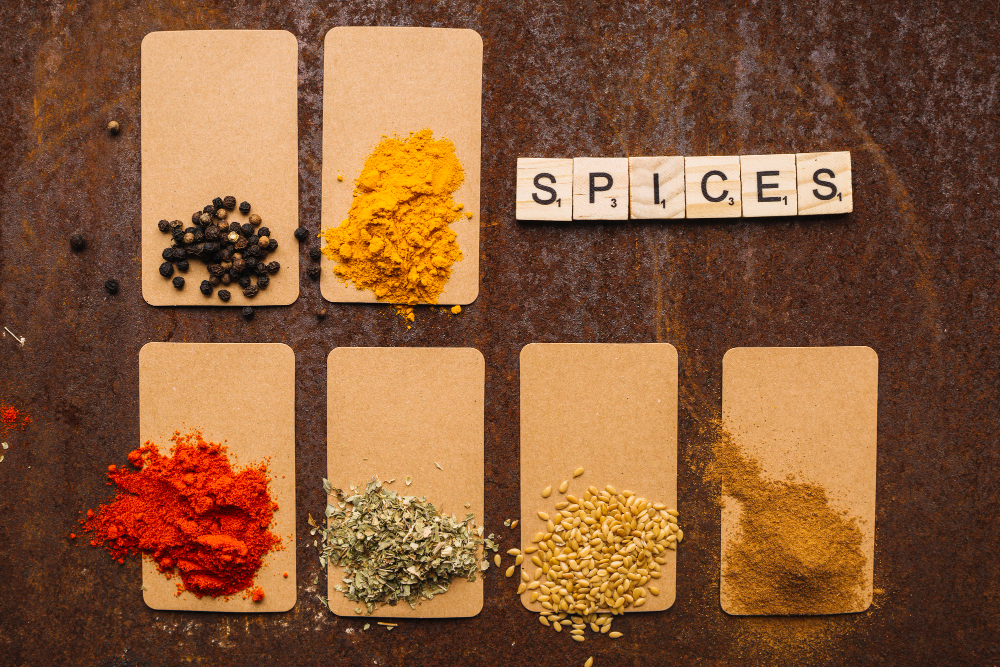Spices have played a significant role in human history, captivating our senses and transforming culinary experiences for centuries. From the fragrant aroma of cinnamon to the fiery kick of chili peppers, spices have not only enhanced the taste of our food but also influenced global trade, exploration, and cultural exchange. In this article, we embark on a flavorful journey, delving into the intriguing history of spices, from their origins in ancient civilizations to their place in our modern-day culinary delights.
The Spice Route: A Tale of Trade and Exploration
The Spice Route stands as a testament to the historical importance of spices. Dating back thousands of years, this network of trade routes connected the East and West, facilitating the exchange of valuable spices. The allure of spices such as pepper, cinnamon, cloves, and nutmeg drove explorers and merchants to brave treacherous journeys across oceans and continents. The demand for these exotic flavors sparked the Age of Discovery, with explorers like Vasco da Gama and Christopher Columbus searching for new routes to the Spice Islands. The Spice Route not only shaped the course of history but also laid the foundation for globalization and cultural exchange.
Ancient Egypt: Fragrant Offerings to the Gods
Spices held great significance in the ancient world, with civilizations like Ancient Egypt incorporating them into their religious rituals and daily life. Egyptians used spices such as frankincense and myrrh in their elaborate burial ceremonies and believed that these fragrant offerings would appease the gods. Spices were also prized for their medicinal properties, and ancient Egyptians used them in remedies and ointments. The use of spices in ancient Egypt showcases their early cultural and culinary importance.
The Silk Road: A Melting Pot of Flavors
The Silk Road, another famous trading route, not only facilitated the exchange of silk and other goods but also brought spices from the Far East to the West. This vast network of routes spanning thousands of miles linked the ancient civilizations of China, India, Persia, and the Mediterranean. Along this route, spices like ginger, turmeric, and cardamom were traded and introduced to new cultures, influencing the cuisines and flavors of diverse regions. The Silk Road became a melting pot of flavors, connecting civilizations and leaving a lasting impact on the culinary traditions we enjoy today.
The Spice Islands: A Bounty of Flavor
The Spice Islands, also known as the Moluccas, were the epicenter of the spice trade in ancient times. Located in present-day Indonesia, these islands were the exclusive source of highly sought-after spices such as cloves and nutmeg. The control of these precious commodities led to fierce competition among European powers, including the Portuguese, Dutch, and British. The Spice Islands were considered the “spice capital” of the world, and their discovery and subsequent colonization fueled the age of European exploration and expansion.
The Age of Discovery: Spices as Symbols of Wealth and Status
During the Age of Discovery, spices became symbols of wealth, luxury, and status. Their rarity and high demand made them incredibly valuable commodities. The abundance of spices in the European courts signified power, affluence, and sophistication. The allure of spices not only drove explorers to embark on perilous voyages but also sparked fierce competition among nations to establish control over spice-producing regions. The spice trade shaped economies, influenced politics, and changed the course of history.
Spices in Modern Cuisine: A Fusion of Flavors
Today, spices continue to hold a cherished place in our culinary experiences. They add depth, complexity, and unique flavors to dishes from around the world. From the vibrant curries of India to the aromatic spices of Morocco and the fiery cuisine of Mexico, spices play a routes of the past have left a lasting legacy on our modern palates, as we continue to savor the diverse and tantalizing flavors that spices bring to our meals.
